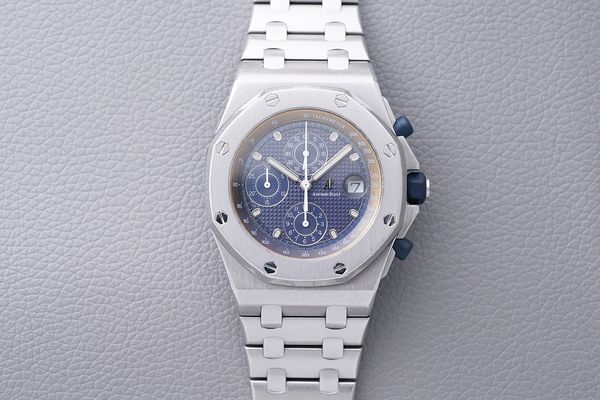- By Arthur Touchot
It has become quite common for a watch brand to revisit one of its more historically important models and to re-introduce a new version for its current clientele. These typically come with small changes in the size and overall design, and the addition of the odd date wheel or some other ‘modern’ function. Occasionally though, they lead to massive transformations.
Emmanuel Gueit is responsible for one of the most controversial but ultimately influential watch revamps of the 20th century. The Swiss designer was only 22 when he was approached by Stephen Urquhart, the former CEO of Audemars Piguet, to create a 20th anniversary model for the Royal Oak.
Sales of the company’s first stainless steel sports watch had been in steady decline, and the company hoped the commemorative piece would rejuvenate the line.
“Create something young men would want to wear, they said,” recalls Gueit. Despite his lack of experience, the designer says he felt absolutely no pressure. “I was young, and I didn’t really care about taking risks with the watch,” he says.

While remaining faithful to the core tenants of Genta’s design – the octagonal bezel and Tapisserie dial - Gueit injected some testosterone into the line by increasing the size of both the case and the bracelet, and by adding a thin layer of colourful rubber on parts of the watch, including the pushers and the crown. The first sketches looked strong and the project was quickly approved, but the first prototypes failed to convince everyone on the team.
One of the major sticking points was the watch’s size. At 42mm, this was going to be one of the largest watches on the market, by some margin, and much larger than anything Audemars Piguet was previously used to.
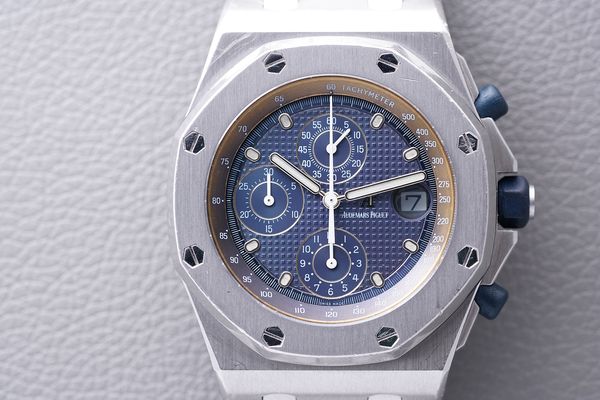
But Gueit knew how much people loved the Sea-Dweller ref. 16600, a watch of similar size, so he borrowed one belonging to a friend a few days before presenting his final prototype to the board.
When the size of the Offshore inevitably came up, he threw the Rolex onto the table. “If Rolex can sell this, we can sell the Offshore,” Gueit remembers saying. “Everyone burst out laughing.”
The Offshore was still slightly larger than Rolex’s professional diver but the brash move on Gueit’s part was exactly what Urquhart had been looking for, and he'd obvioulsy struck a chord with the Rolex comparison. If they could sell oversized watches, Audemars Piguet could too.
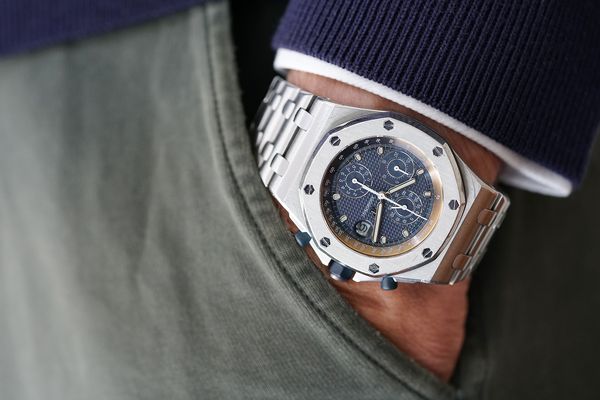
And that’s exactly what they did. The Royal Oak Offshore was presented at the 1993 Basel Watch Fair, one year behind schedule and 21 years after the Royal Oak. Just like the Royal Oak in 1972, the Offshore was heavily criticized at first: too big, too different. No one would buy this watch, people told Gueit.
The watch’s most vocal critic would be Gerald Genta himself. The father of the Royal Oak famously stormed in during the watch’s presentation, accusing Gueit of ruining his design.
The first to really understand and love the Offshore were the Italians, according to Gueit. The watch became a favourite among young and wealthy Italians, and receiv further recognition when the country’s most beloved athlete, alpine skiing legend Alberto Tomba, started wearing the watch.

“That was the start of it all for the Offshore. He was the watch’s first ambassador, and sales took off after that.” Not only was it acceptable to wear a 42mm sports watch, it was cool to do so. The Offshore reconnected Audemars Piguet with youth culture.
In fact, the Offshore initiated a radical transformation of the watch industry, establishing the trend for oversized watches. Countless versions of “The Beast” would follow, each one bolder than the one before, and collaborations with global celebrities, including Arnold Schwarzenegger (with the first all black Offshore "End Of Days") would further cement the Offshore's cult-status.
Emmanuel Gueit left Audemars Piguet in 1999, establishing his own design company. Since then he's helped launch models for various companies, including Piaget and Rolex, but he keeps coming back to the Offshore.
Because his name isn’t as closely associated to the Offshore as Genta’s is to the Royal Oak, he’s been able to get away with wearing the watch himself. He remembers on one occasion being approached at the Salon International de la Haute Horlogerie (SIHH) by a man who claimed the buckle of his watch was incorrect.
Gueit politely responded it was, explaining that he had designed the watch, and that his was a very early model, Number 39, which he received from Urquhart during a factory visit soon after the Offshore was greenlit into production.
“He picked it up from the production line and said ‘Here, this one’s yours.’ It was an amazing gesture,” says Gueit.
Now, more than 40 years since the Royal Oak, Audemars Piguet has decided it was the Offshore’s turn for an anniversary watch. This time, the company has decided not to introduce a new take on the design, but instead to make a perfect re-edition.
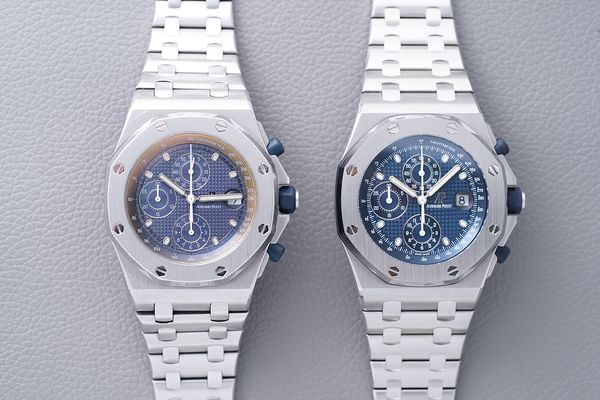
Side-by-side, the new watch and the original version are almost indistinguishable. The only tell that one is a few decades older than the other is the slightly faded réhaut which – like the new watch shows – was blue.
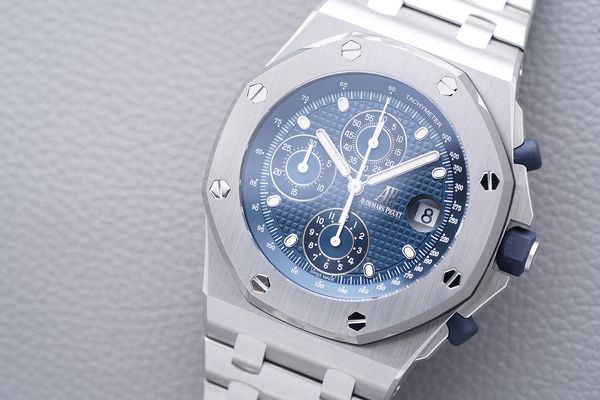
The similarities honour Gueit’s original design. Nothing’s been added, and nothing’s been removed. The only thing that has changed is the company’s position in the world of luxury, and crucially, the number of Offshores they will be selling this year.
Certainly none will be more important than Gueit’s personal watch. Historically speaking, this is the reference that launched Audemars Piguet into the modern era, and no model can match Number 39 it in terms of provenance.
Emmanuel Gueit's Royal Oak Offshore will be offered in The Geneva Watch Auction: EIGHT, taking place at the Hotel La Reserve, in Geneva, on Nov 10-11.
